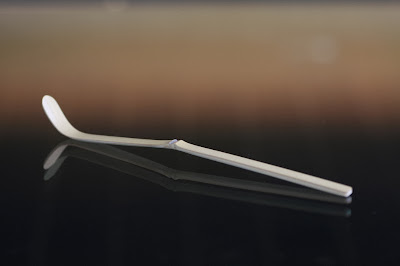Do you think you prepare delicious
matcha with correct amount of tea and water? I have talked about this topic before. However, it might not be so accurate to judge the correct amount by its looks or weight. Who knows, maybe your scale doesn’t exactly point to the right digit. You might not still be sure if your tea tastes right. Today, I want to share things that I realized when I was preparing things for the tea ceremony that I held the other day.
By the way, have you ever heard of the term “
tatedashi”?
Tatedashi is a way of serving tea by making it in another room and bring it to the guests in the tea room. The host prepares tea in the tea room only for the first few guests and the tea for the rest are served from the back by assistants. It makes the ceremony runs fast and smooth, and it’s often preferred at a ceremony with a lot of guests.
For the tea ceremony that I had, an assistant needed to make a lot of bowls of tea promptly and precisely in the preparation room. For my assistant, I looked for the way to effectively measure tea and water accurately. It helps to serve consistent quality of tea for everybody.
1.8g of
matcha and 60ml water are standard amounts of ingredients. I wanted to serve tea with light flavor because most of my guests were not so familiar with
matcha. To find the best mixture for this gathering, I tried different amounts of
matcha and water. My choice was 1.2g of
matcha and 50ml of water. This tea is very mild but you can still enjoy the essence of
matcha flavor. You will beam with delight from its sweetness hopping on a comfortable grassy note. I found perfect items in the kitchen to measure the ingredients. They are a 5ml spoon and a small
sencha cup. I found out that you can scoop around 1.2g of
matcha with a 5ml spoon. Take note, I said spoon, not spoonful (^-^) If I fill 95% of the Wabi-iki small
sencha cup which is one of the products of our shop, it is about 50ml. With the spoon and cup, I could get my assistant to serve consistent tea.
If you are a beginner about matcha and not sure how decent matcha tastes like. You can try using 5ml spoon to measure the correct amount. You might not have a problem measuring water but it may be difficult measuring matcha. So, 5ml spoon is useful. Try the mild tea with one spoon of matcha and 50ml water, and see how you like it. Then you can adjust the amounts to find your best mixture! Good luck.
Note:
Sift matcha with a tea strainer before measuring with the spoon.
Scoop matcha gently when measuring.
Question:
In Japan, we have two scale spoons for cooking. One is called the small spoon which is 5ml and the other one is the large spoon for 15ml. I found the equivalent English words in my dictionary, a “tea spoon (5ml)” and a “table spoon (15ml)”. Are they really for scaling? Are they common in your county? I’ll be happy if you leave a comment on this post for the answer.
Related posts:
Correct amount of matcha
Volume of sifted and non-sifted matcha
Does sifted matcha really have more volume?
Correct amount of matcha on a tea spoon













